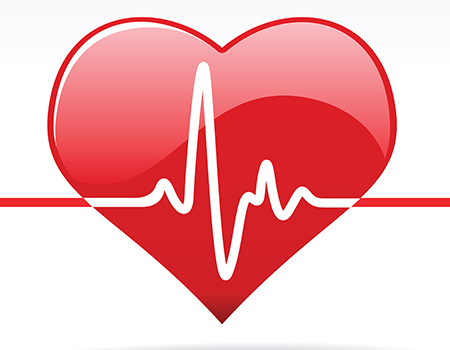
An estimated 2.5 million Americans suffer from irregular heartbeats-also known as atrial fibrillation. Baylor Health Care System is raising awareness about this often misunderstood, but potentially life changing cardiovascular condition whose incidence is on the rise and expected to more than double by 2050.
"One of the biggest misconceptions about atrial fibrillation that I hear from patients is that if they can't feel it, they don't have it," says Manish Assar, MD, a cardiac electrophysiologist on the medical staff at Baylor Jack and Jane Hamilton Heart and Vascular Hospital. "But the diagnosis is made through an EKG, and if the EKG says they have atrial fibrillation, they have it."
While many patients exhibit no symptoms, that wasn't the case for Doug Gerber. "Over time my heartbeat had become irregular. It would race to over 150 or slow down to under 50," he explains. "It would pound so hard that I could see it beating through my shirt."
Gerber's heart palpitations are one of the more common signs of atrial fibrillation, along with shortness of breath, fatigue, chest pain, and dizziness or lightheadedness.
Atrial fibrillation can strike at any age, but it is most prevalent in the elderly. In fact, 10 percent of men over the age of 80 have it. The elderly are at greater risk because they also are more likely to have conditions that can trigger irregular heartbeats, such as high blood pressure, coronary artery disease, heart valve disease and heart failure. Learn more at BaylorHealth.com/HeartConditions
Offbeat Heart, High Risk Brain
No matter how old a patient is or whether or not they exhibit any symptoms, atrial fibrillation can lead to other serious health problems.
"Atrial fibrillation is responsible for 15 to 20 percent of strokes," says Dr. Assar. "And the strokes that are a result of atrial fibrillation are large and have higher mortality than other strokes and higher rates of serious disability than other strokes."
Because atrial fibrillation is a condition in the heart, the threat to the brain is often overlooked. What patients may not realize is that due to atrial fibrillation, blood clots can actually form in the heart, break off and travel to the brain, blocking major vessels, resulting in a stroke.
Getting Back in Rhythm
There are several different ways to get hearts back on beat. There are medications geared at managing the rapid heart rate of atrial fibrillation rather than curing it. Other medications do aim to get the heart back to a normal rhythm, or maintain a normal rhythm after another avenue of treatment-often electrical cardioversion wherein an electrical current is used to influence heart rhythm-normalizes the heartbeat. With either approach, blood thinners to prevent stroke is a mainstay for most patients.
Catheter ablation is a minimally invasive surgical option, which treats atrial fibrillation at its source. For years, catheter ablation used a heat technology to accomplish this, but a new freezing technology, called cryoablation, can now be used in some cases. Baylor was one of the clinical trial sites for this new freezing technology.
"It's yet to be definitively proven in a large head-to-head study, but it appears the major complication rate is lower with cryoablation, and patients seem to tolerate it better," says Dr. Assar.
Doug Gerber was one of those patients. After attempting to control his atrial fibrillation though medication, he was in need of a more permanent solution, which he received at Baylor. "My electrophysiologist understood exactly what was happening and recommended cryo ablation," he says.
Since the procedure, Gerber and his family have been able to look to the future without worrying about his heart. Now he sees himself as just a regular guy-not a guy with an irregular heartbeat.
Contact:
Susan Hall
214.820.1817
susanh@baylorhealth.edu
About Baylor Scott & White Health
As the largest not-for-profit health system in the state of Texas, Baylor Scott & White promotes the health and well-being of every individual, family and community it serves. It is committed to making quality care more accessible, convenient and affordable through its integrated delivery network, which includes the Baylor Scott & White Health Plan, Baylor Scott & White Research Institute, the Baylor Scott & White Quality Alliance and its leading digital health platform – MyBSWHealth. Through 51 hospitals and more than 1,200 access points, including flagship academic medical centers in Dallas, Fort Worth and Temple, the system offers the full continuum of care, from primary to award-winning specialty care. Founded as a Christian ministry of healing more than a century ago, Baylor Scott & White today serves more than three million Texans. For more information, visit: BSWHealth.com
